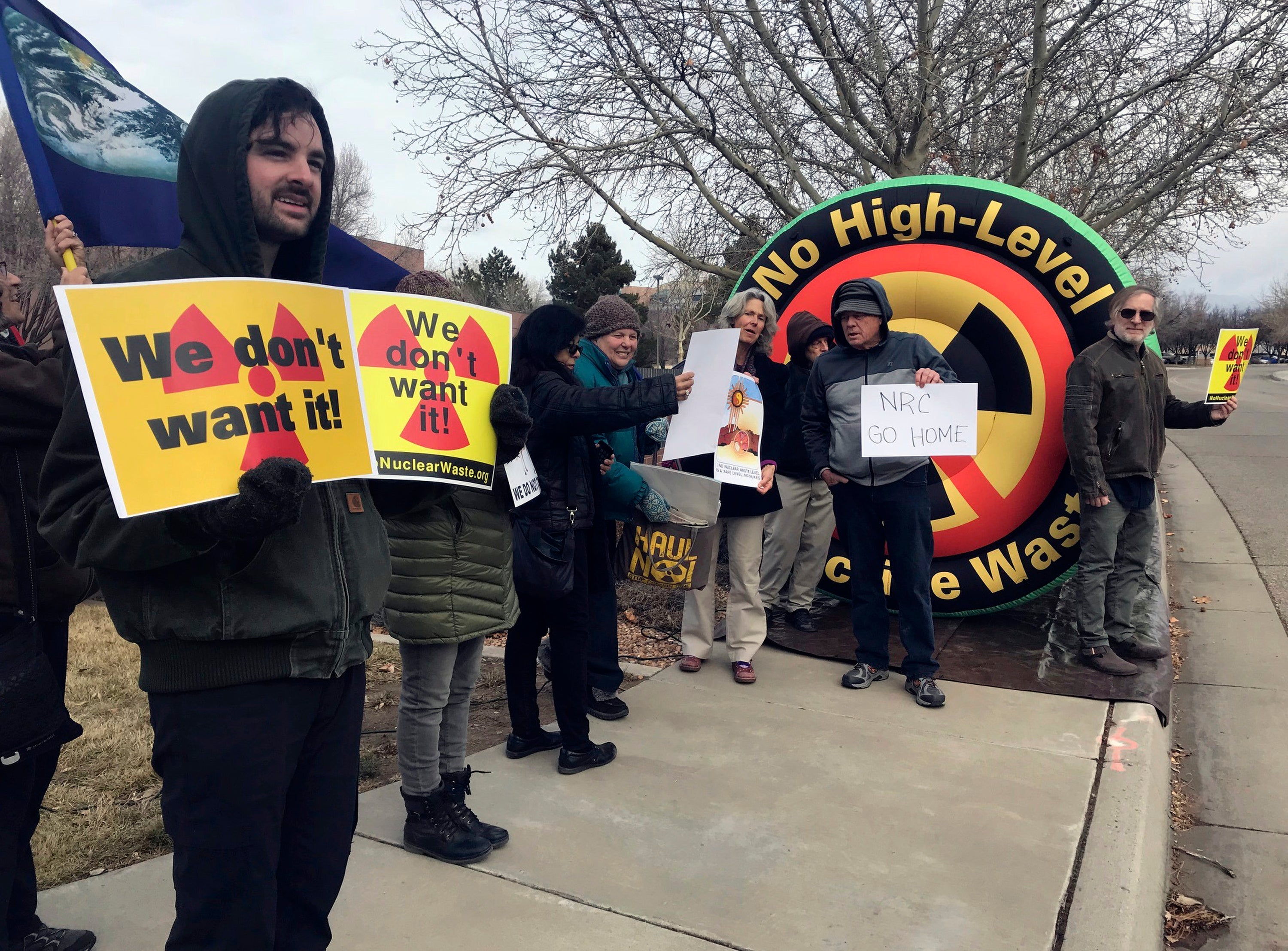New Mexico opts for veto power on spent nuclear fuel debate
Lawmakers have endorsed a measure that calls for banning the storage of spent nuclear fuel in New Mexico, unless the state provides its consent first

Your support helps us to tell the story
From reproductive rights to climate change to Big Tech, The Independent is on the ground when the story is developing. Whether it's investigating the financials of Elon Musk's pro-Trump PAC or producing our latest documentary, 'The A Word', which shines a light on the American women fighting for reproductive rights, we know how important it is to parse out the facts from the messaging.
At such a critical moment in US history, we need reporters on the ground. Your donation allows us to keep sending journalists to speak to both sides of the story.
The Independent is trusted by Americans across the entire political spectrum. And unlike many other quality news outlets, we choose not to lock Americans out of our reporting and analysis with paywalls. We believe quality journalism should be available to everyone, paid for by those who can afford it.
Your support makes all the difference.An effort to keep spent nuclear fuel produced by commercial U.S. nuclear power plants from being shipped to New Mexico cleared its final legislative hurdle Friday, and Democratic Gov. Michelle Lujan Grisham intends to sign the measure.
The New Mexico House voted 35-28 in favor of the bill after a lengthy debate. Five Democrats joined Republicans in opposition, arguing that the bill would challenge longstanding federal authority over nuclear safety matters and lead to new court challenges.
The bill from Democratic state Sen. Jeff Steinborn, of Las Cruces, would impact a proposed multibillion-dollar facility in southeastern New Mexico that would have the capacity to temporarily store up to 8,680 metric tons of used uranium fuel. Future expansion could make room for as many as 10,000 canisters of spent fuel over six decades.
The Nuclear Regulatory Commission may announce a decision soon on whether to grant a license for the project spearheaded by Holtec International, which has spent an estimated $80 million over the past eight years on the approval process.
Lujan Grisham and members of New Mexico’s congressional delegation have voiced strong opposition to building the facility along the state’s border with Texas. Both states sued the federal government over the issue, and top elected officials in Texas were unsuccessful in their efforts to stop a similar facility in neighboring Andrews County from being licensed.
If a license is granted for the complex in New Mexico, it would still need permits from the state Environment Department. That's where critics say the state could lean on the legislation and halt the project.
Rep. Gail Chasey, an Albuquerque Democrat, argued that there has been no incentive for states with nuclear power plants to find permanent solutions for dealing with spent fuel. As long as New Mexico is seen as an option, those states won't be concerned with the long-term effects, she said.
“The trouble is this is a forever decision. We don't get to decide, oh, let's not do this anymore and take it away," Chasey said. "So think about the fact that if it were such a profitable and good thing, then the states that produced it would have it near their facilities.”
According to the U.S. Department of Energy, nuclear reactors across the country produce more than 2,000 metric tons of radioactive waste a year, with most of it remaining on-site because there’s nowhere else to put it.
Since the federal government has failed to build a permanent repository, it reimburses utilities to house the fuel. That cost is expected to stretch into the tens of billions of dollars over the next decade, according to a review by independent government auditors.
The fuel is sitting at temporary storage sites in nearly three dozen states, either enclosed in steel-lined concrete pools of water or in steel and concrete containers known as casks.
U.S. Energy Secretary Jennifer Granholm has talked about revisiting recommendations made a decade ago by a blue-ribbon commission on America’s nuclear future. In November, her agency issued a request seeking input on a consent-based siting process to identify locations to store commercial spent nuclear fuel.
Despite opposition from environmentalists, the Biden administration has pointed to nuclear power as essential to achieving its goals to create a carbon-free electricity sector by 2035.
Some lawmakers from southeastern New Mexico said local elected officials and residents would welcome the Holtec project and that visits to some of the current storage sites near power plants have shown the casks are safe.
They also touted the safety of transporting the material by rail to New Mexico, saying armed guards would be aboard the trains and that testing has shown the casks would not release radiation in the event of a derailment.
Republican Rep. Cathrynn Brown, whose district includes the proposed Holtec site, said the region already is home to the federal government's only underground repository for Cold War-era waste generated during nuclear research and bomb-making. It also hosts a uranium enrichment plant.
The legislation sends a message to companies to “invest all you want and then we’re going to pull the rug out from under you,” Brown said. "And I don’t think that’s fair.”
Still, other lawmakers have voiced concerns about the project since it would be located within the Permian Basin, one of the most productive oil fields in the world. New Mexico gets a significant portion of its revenue from drilling.